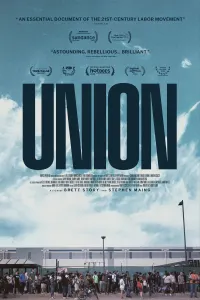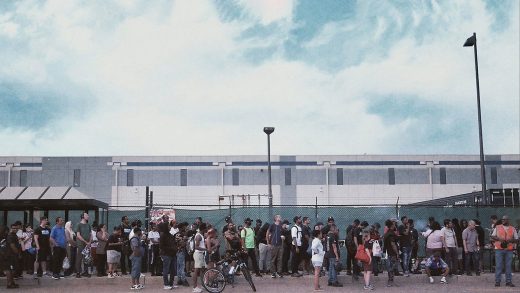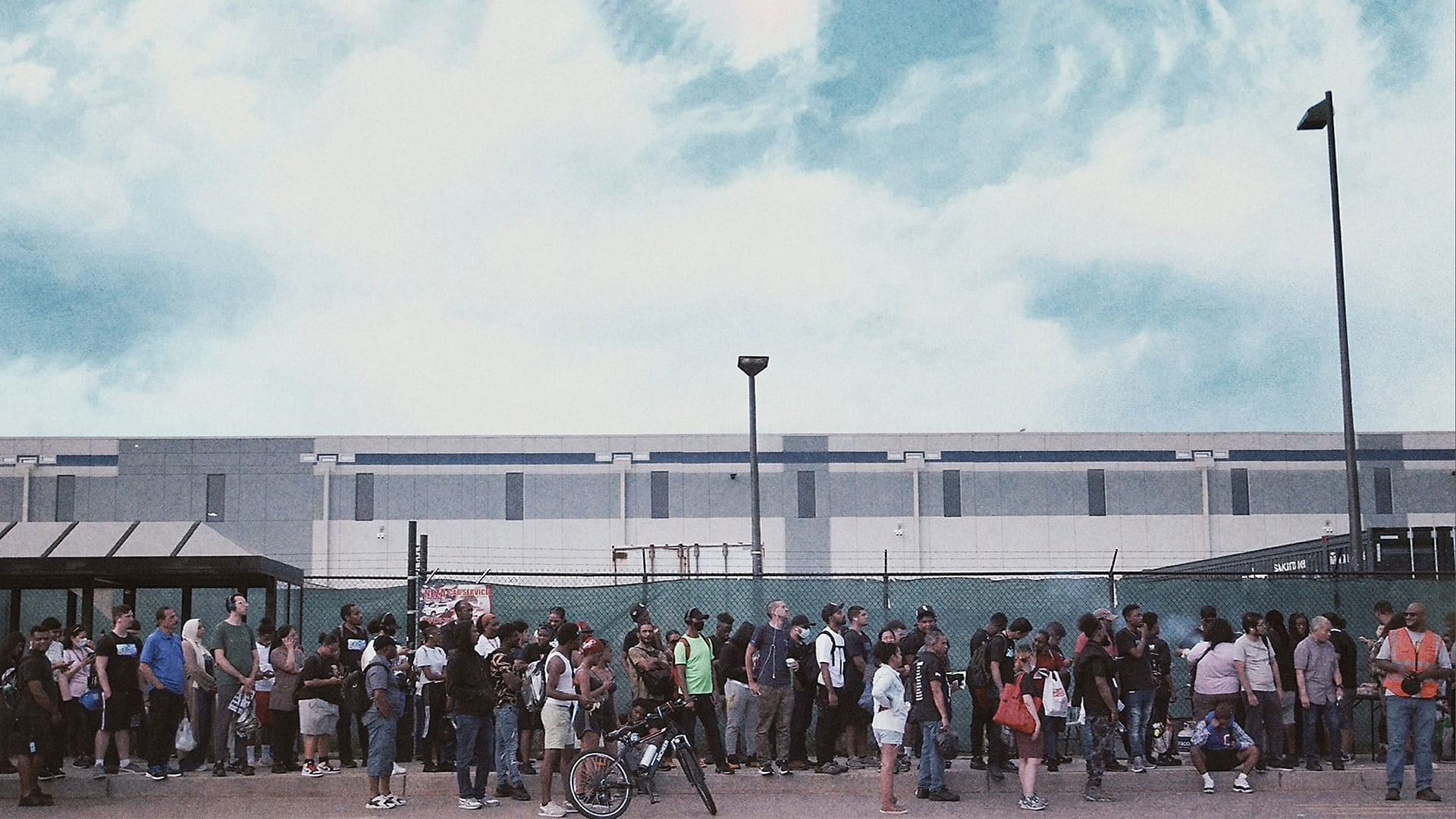This documentary follows Amazon workers as they unionized. But when no one would distribute the film, the story became even bigger
This documentary follows Amazon workers as they unionized. But when no one would distribute the film, the story became even bigger
“It’s an honor just to be nominated” may be a cliché, but it’s still true that landing an Oscar nomination brings prestige, attention, and lots of awards-season press coverage. But for Union, a documentary that follows the historic efforts of a group of Amazon warehouse workers as they launch—and win—the first-ever union campaign at the retail giant, there’s a story in the fact that it wasn’t nominated.

When the creative team behind Union first embedded with Amazon Staten Island warehouse workers in 2020, they weren’t looking to make a buzzy, commercial film. They raised their full budget before the Amazon Labor Union even won its election. They were committed, producer Samantha Curley says, to “documenting this particular labor struggle and asking questions about the modern workforce and how people are politicized through work” long before it was clear just how big the story would become.
But they were there to capture that win, and they were ready with years of footage of Chris Smalls, the campaign’s intrepid leader, before he became an overnight labor celebrity—heading to the White House in 2022 and onto The Daily Show for an interview with Trevor Noah and as the subject of major media coverage. And it seemed like their documentary could actually be marketable—and big. It premiered at Sundance 2024 and won the festival’s U.S. Documentary Special Jury Award for the Art of Change. “We really felt like there wasn’t a reason that it wouldn’t get picked up or distributed,” Curley says. They knew Amazon’s streaming service wouldn’t buy the film, of course, but they figured other places might.

But distributors didn’t clamor to pick it up. In fact, the filmmakers got pass after pass. “Not even ‘we’re waiting to see’ or ‘it’s a soft pass’ or just not hearing back, but hard no’s, relatively quickly,” Curley says. So they pivoted to an independent self-release, partnering with 250 labor organizations and affinity groups to screen the film for one night or for limited runs in more than 20 cities. Those screenings often sold out, meaning Union was the highest-grossing film for the theaters on those nights. They held showings followed by Q&As with Amazon Labor Union workers and screened the film near Amazon warehouses. They did an online rental release where viewers could donate so that an Amazon worker could watch the film for free.
In this way, Union’s distribution became a story in itself, mirroring the one the film told—about the power of organizing, about how a small group of people can have a big impact, and who institutional systems really work for. Curley says none of the big distributions actually even said anything about Amazon. “What we gathered, that was never explicitly stated, was that it was really about labor,” she says.

The Amazon Labor Union was just one part of a bigger wave of organizing taking place. Around the same time, Apple retail workers began organizing (and got their first contract in 2024), as did Disneyland character performers (who voted to unionize in 2024). Major actions from the United Auto Workers, Hollywood actors and writers, and others dominated the news cycle of the past few years. Curley says it was becoming clear how relevant and threatening the labor movement and worker power is. “Again, this wasn’t ever explicitly stated, but what we took from those conversations [with distributors] was like, these distributors don’t want people pointing the finger at them any more so than they already are,” she says.
Generally, some were also shying away from “political” content—though Curley doesn’t think that Union, or the experience of watching it, is overtly political. “If you’re reading the film that way, it’s definitely present, but I think the film is about group projects, and about the audacious belief that we can make anything better, or we can change anything about our circumstances,” she says.
Even though the film itself focuses on Amazon, it offers a broad perspective of the labor movement at large. “It is pretty insular to this group of Amazon organizers on Staten Island,” Curley says, “but we worked really hard to remind viewers this is just one small part of this huge machine.” The timing of the film also speaks to this: it’s not a 10-year retrospective of a historic moment but it came out in real time, amid an ongoing labor resurgence. “We wanted the film to become part of the conversation about the future of work and labor organizing.”
After all that effort, Union did manage to get short-listed for an Academy Award for Best Documentary Features in 2025, which means that out of more than 14,000 films made last year, Union became one of only 15 finalists in contention for a nomination in its category. “We were really fortunate to have such strong support and guidance within the awards campaign and belief that the film could really be in the conversation,” Curley says. Being short-listed did increase the film’s visibility, boost its independent-distribution path, and give the participants some validation for all the time they’d committed to the project.

“It would have been cool and a different journey to have been nominated,” she adds, but not being nominated “allows us to continue to balance the kind of prestige of the film with the real collective effort and struggle to get the film out there.” (The film’s creative team, along with Curley, includes directors Brett Story and Stephen Maing, producer Mars Verrone, cinematographer Martin Dicicco, editors Blair McLendon and Malika Zouhali-Worrall, and composer Robert Aiki Aubrey Lowe.)
It’s also an opportunity for the film to keep paving its own way. An Oscars appearance can seem like an ending: a grand culmination of effort. But Union’s story isn’t over. The team is already thinking about its next phase of distribution and has plans tied to May Day and Labor Day. It’s outside the awards circuit and so can tell its story beyond awards season. “Now we just get to be a film that’s trying to reach audiences,” Curley says.
Amazon workers’ fight is also far from over. More than two years after unionizing, they still don’t have a contract. (Workers authorized a strike at the end of 2024 as part of its efforts to get the retail giant to negotiate.) And the larger conversation about labor also isn’t ending. Though the Trump administration is taking steps to dismantle the labor movement and erase worker power, those threats are also bolstering conversations about the importance of workers’ rights and the power of collective organizing. The film might focus on Amazon, but really it highlights this dichotomy, says Curley, of how “organizing is essential and also impossible.”
The film shows the Staten Island warehouse workers’ win, yes, but also how the Amazon Labor Union lost its next two elections, and how infighting and burnout start to appear among the organizers. It ends with showing the very beginnings of a campaign at another warehouse, Amazon’s ONT-8 fulfillment center in California’s Inland Empire. “It’s this idea of, we just spend time with this small group of workers, and [this is] going to be happening with workers at every company and every part of the world,” Curley says, “and that being inspiring and daunting.”
ABOUT THE AUTHOR
Fast Company
(4)



